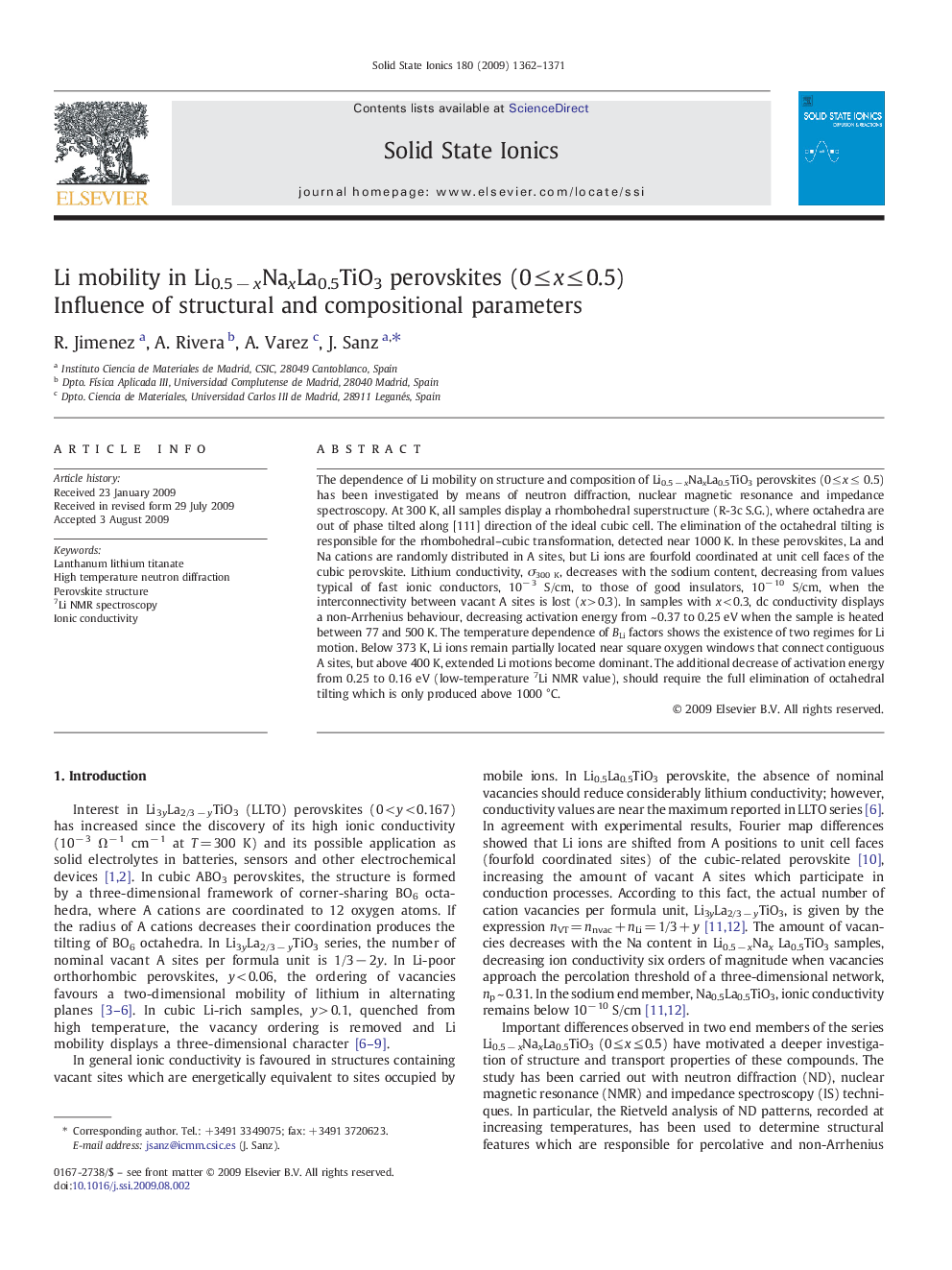| Article ID | Journal | Published Year | Pages | File Type |
|---|---|---|---|---|
| 1297783 | Solid State Ionics | 2009 | 10 Pages |
The dependence of Li mobility on structure and composition of Li0.5 − xNaxLa0.5TiO3 perovskites (0 ≤ x ≤ 0.5) has been investigated by means of neutron diffraction, nuclear magnetic resonance and impedance spectroscopy. At 300 K, all samples display a rhombohedral superstructure (R-3c S.G.), where octahedra are out of phase tilted along [111] direction of the ideal cubic cell. The elimination of the octahedral tilting is responsible for the rhombohedral–cubic transformation, detected near 1000 K. In these perovskites, La and Na cations are randomly distributed in A sites, but Li ions are fourfold coordinated at unit cell faces of the cubic perovskite. Lithium conductivity, σ300 K, decreases with the sodium content, decreasing from values typical of fast ionic conductors, 10− 3 S/cm, to those of good insulators, 10− 10 S/cm, when the interconnectivity between vacant A sites is lost (x > 0.3). In samples with x < 0.3, dc conductivity displays a non-Arrhenius behaviour, decreasing activation energy from ~ 0.37 to 0.25 eV when the sample is heated between 77 and 500 K. The temperature dependence of BLi factors shows the existence of two regimes for Li motion. Below 373 K, Li ions remain partially located near square oxygen windows that connect contiguous A sites, but above 400 K, extended Li motions become dominant. The additional decrease of activation energy from 0.25 to 0.16 eV (low-temperature 7Li NMR value), should require the full elimination of octahedral tilting which is only produced above 1000 °C.
